The Swedish capital of Stockholm spans seventeen islands on the edge of the Baltic Sea.
A watery haven, there’s a boat at every turn: from the local ferries that chauffeur commuters and the cruise ships crossing Scandinavia, to fishing dinghies that neighbor grand yachts.
The city is also renowned for the impressive Vasa Museum: the world’s only preserved 17th-century ship, which sunk off the coast of Stockholm on her maiden voyage in 1628.
But one vessel in particular catches the tourist’s eye.
Docked on the banks of the grassy Skeppsholmen Island, opposite the city’s medieval old town, is a gleaming white, full-rigged steel ship dating from the 1800s: the af Chapman.
Cutting a majestic figure on the Stockholm city skyline, the af Chapman is a city icon, named for the famed Swedish shipbuilder, Fredrik Henrik af Chapman.
Once upon a time, the boat voyaged the Atlantic. Later, it trained legions of Swedish naval officers.
But the ship no longer sails the seven seas. Today, the af Chapman is a 19th-century ship turned 21st-century youth hostel.
Boat meets hostel
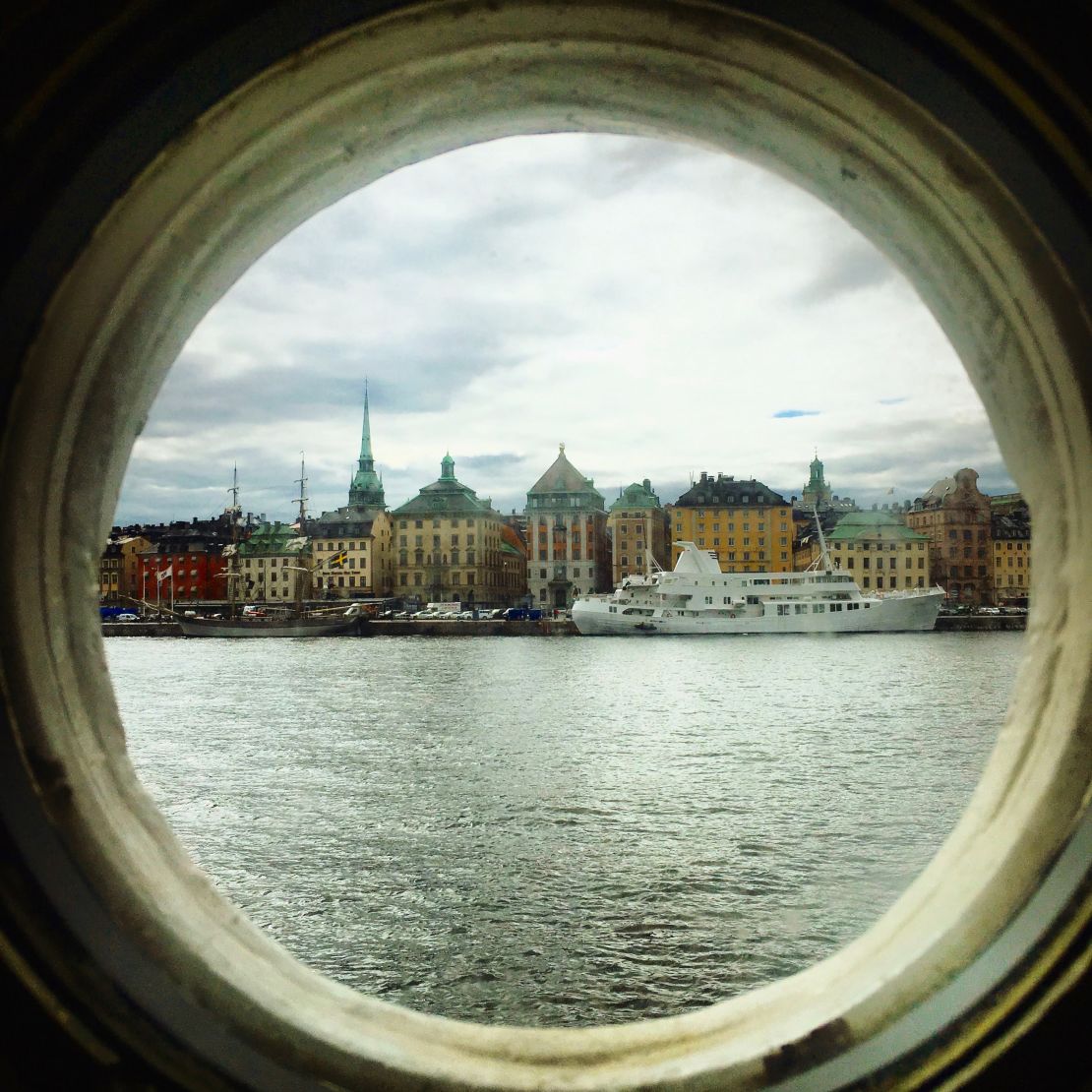
Managed by the Swedish Tourist Association, the af Chapman sleeps 124 in cosy cabins complete with porthole views across the water.
The hostel also owns the on-land adjacent building, which has a nautical link of its own: a former navy barracks, now sleeping 150 and hosting the hostel’s dining and lounging facilities.
The real draw, however, is the boat itself: tourists line up to photograph the af Chapman. Native Stockholmers see her as a city landmark.
The idea of sleeping on a 19th-century boat might not appeal to everyone.
But once you’re on deck, watching the sun set across Stockholm’s coral-colored rooftops, glass of wine in hand, it’s easy to see the allure.
“Just being on the ship is a special feeling,” agrees long-time employee Magnus Frymark, a Stockholm native who has worked on af Chapman for 16 years. “You can sense her history.”
“All of us working here really feel that it is a privilege to host such a cool hostel in the heart of Stockholm,” adds site manager Sofie Jorsell. “HMS af Chapman holds a special place among the city views as one of the most photographed objects in Stockholm.”
MORE: Stockholm: Insider Travel Guide
From England to Sweden, by way of Australia
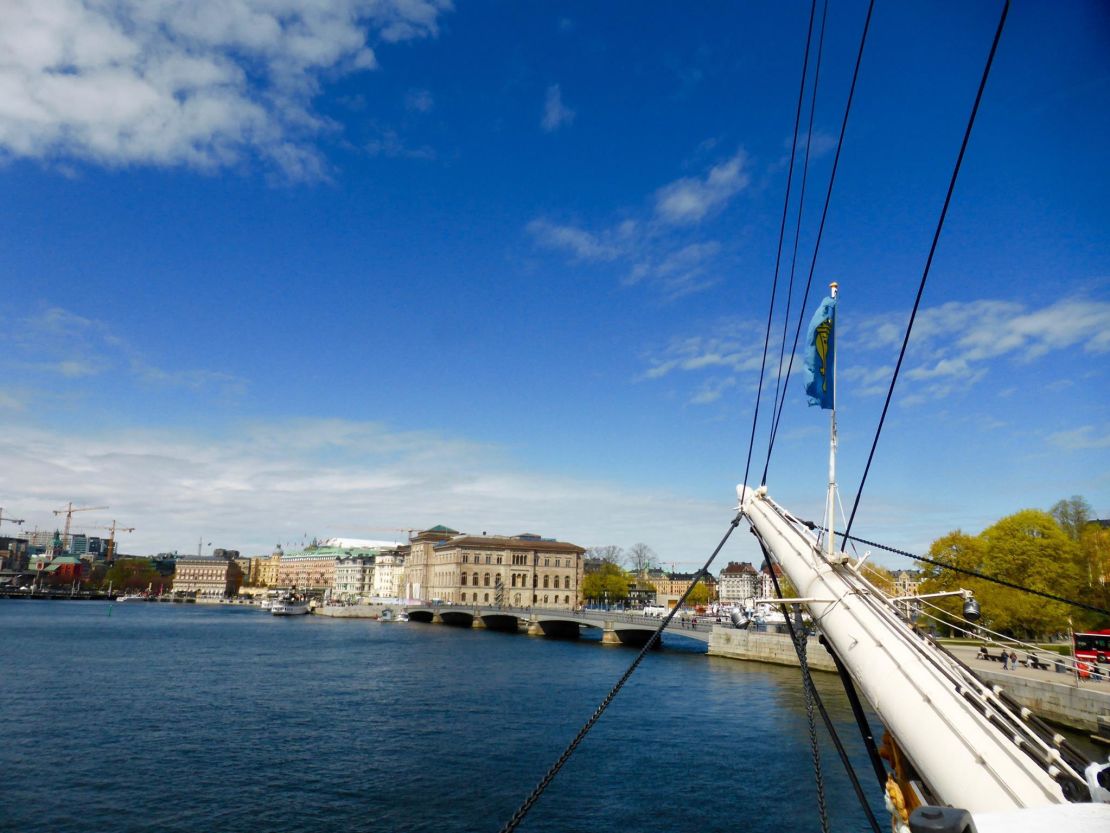
The concept of the floatel isn’t novel, but most floating hotels tend to be modern contraptions.
So just how did this 1800s ship become Stockholm’s top youth hostel?
“She was built in 1888, in England,” explains Frymark. “Her original name was Dunboyne and she was built as a cargo ship. She went all over the world: America, South America, Australia, shipping all kinds of things.”
Owned by Irish company R. Martin and Company, the Dunboyne led a busy life, crossing the Atlantic in a pre-Panama Canal age, when trips easily took 130 days.
In 1908, R. Martin and Company sold Dunboyne to Norway. She continued to ship cargo, before being passed on the Swedish navy – where she was christened af Chapman.
During World War I, she dodged torpedoes and mines sailing across the Baltic. She visited Buenos Aires and Scotland and survived a lightning strike en route to India.
In the early 1930s, the af Chapman sailed her last voyage.
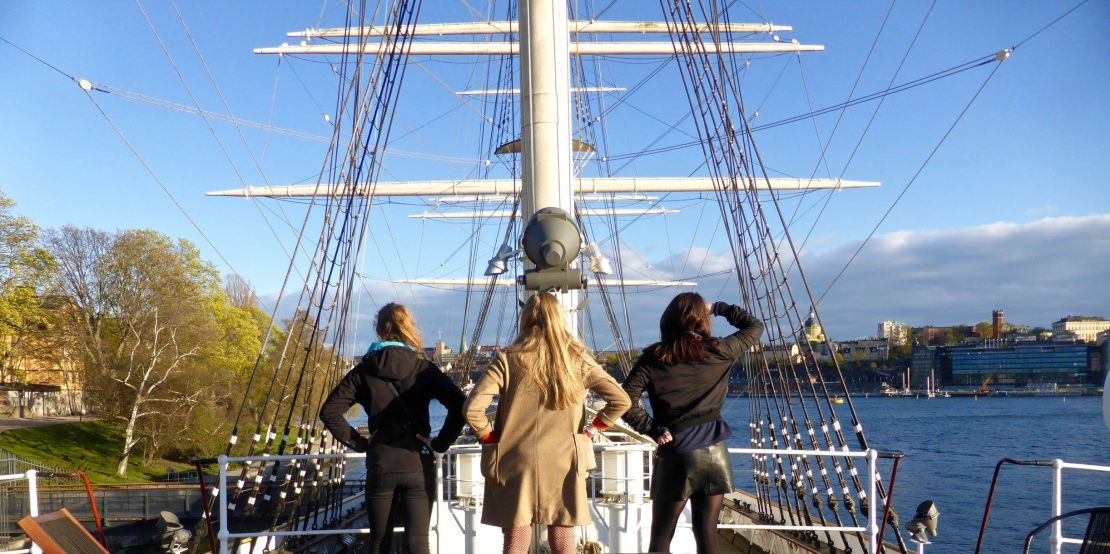
The rigger was seen as worthless, a relic sold to the Stockholm City Council for pittance.
While the City considered ideas about what to do with this acquisition, the proposal came up that the af Chapman could become a hostel.
“That was a great idea,” says Frymark, “So that’s what they did. In 1949 she opened as a youth hostel.”
Youth hostels are often seen as a “modern” phenomenon; indeed, the af Chapman was Stockholm’s first.
“Sweden had a lot of youth hostels up in the mountains and up in the north, but we didn’t have any in the big cities,” explains Frymark. “I don’t think anyone else had done that kind of thing at that time.”
MORE: The World: a floating city of millionaires
From ship to hostel
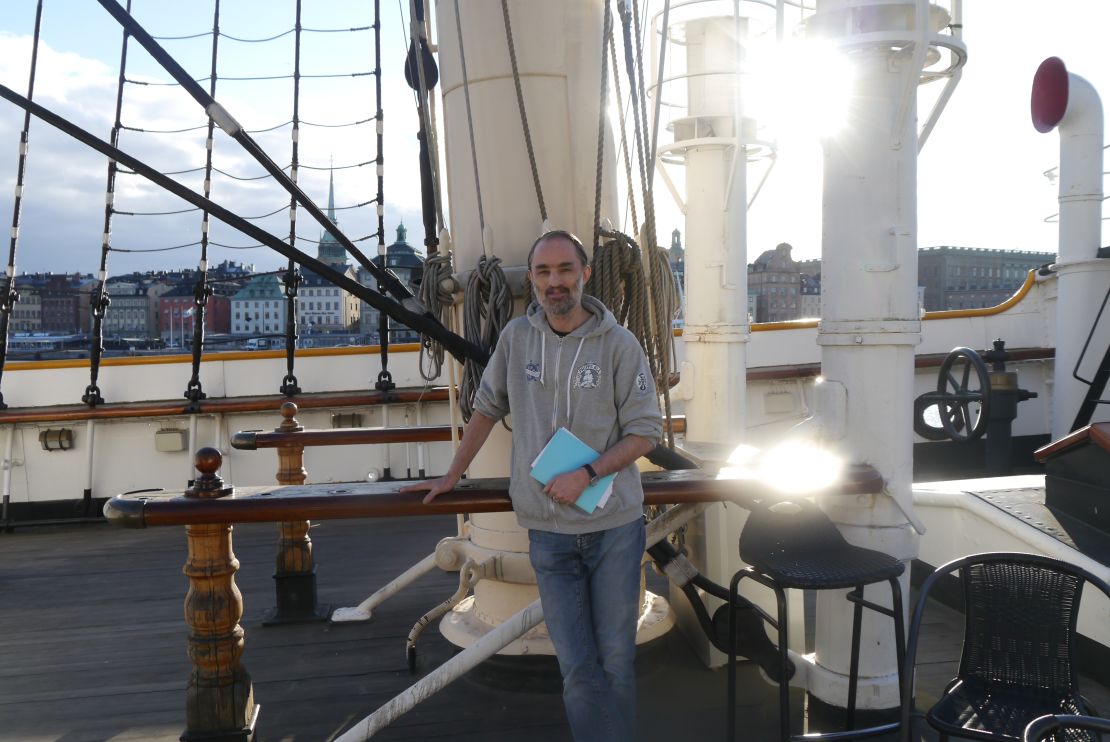
Before the af Chapman could open its doors to the youth of Europe, the boat had to be extensively renovated.
“I know it took about two years [to convert] and they had to adapt her so it would be suitable for regular people,” explains Frymark.
The renovation aimed to keep the ship’s original features as much as possible. Hence the cabins – and the distinctive portholes.
The ship’s mast and rigging remain intact. To the untrained eye, the af Chapman looks ready to set sail, not house backpacking college students.
The af Chapman became an instant hit upon its inauguration and remains incredibly popular. In 2016, 64,800 people visited.
Frymark says that the interior has changed significantly since 1949.
In 2007-8, the af Chapman went through a major renovation. Now there are fewer rooms, but they’re bigger and more comfortable.
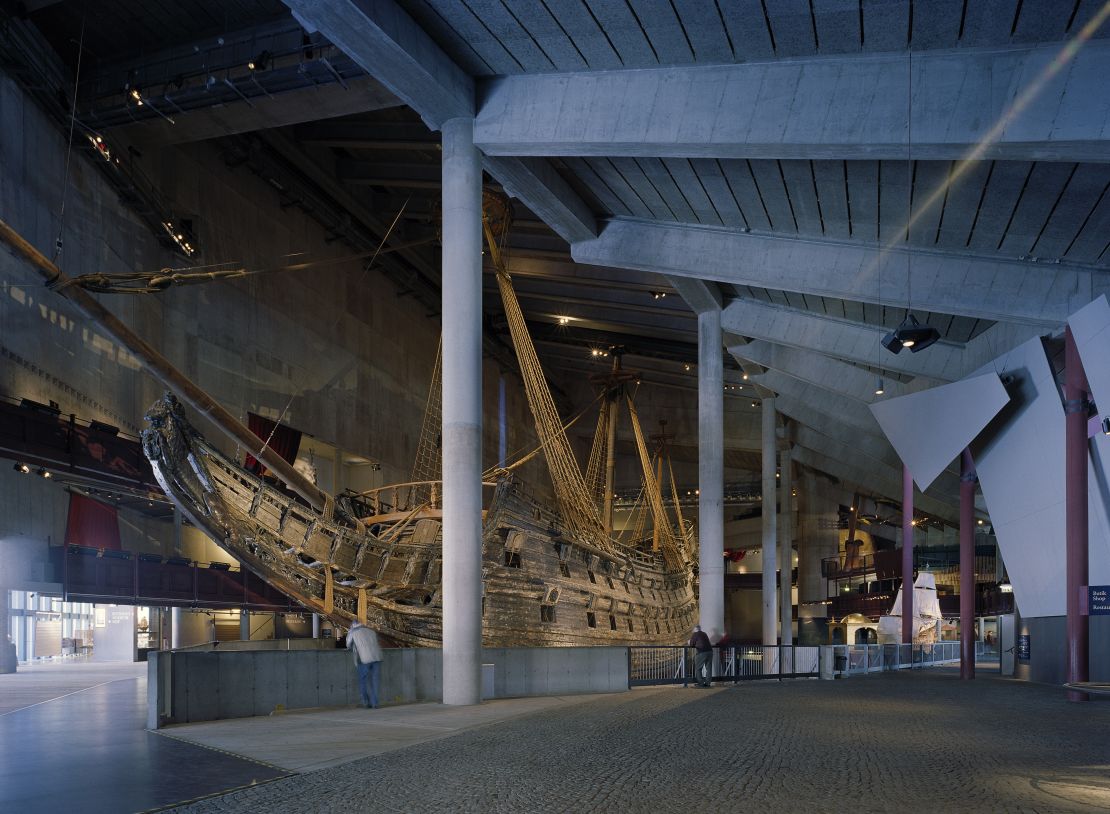
Modern fittings and cosy bunkbeds place the af Chapman at the higher end of the hostel ladder. As well as the prerequisite dorms, there are private cabins suitable for families and couples.
“When I started here it was a lot more backpackers and young people,” reflects Frymark, “Now it’s a lot more diverse, different ages, more families, even people who are traveling with work.”
Despite the modern trappings, the af Chapman team are proud of her many original features. The captain’s room, now used for conferences, is kitted out more or less as it was 50 years ago.
There is also a gun room: “That’s where the captain and his under officer must have planned everything,” says Frymark.
Guests keen to splash out can even stay above deck in the captain’s cabin.
Meanwhile, exploring the deck feels like you’ve stepped straight out of “Pirates of the Caribbean.” It is thrilling to survey the city from this unique vantage point.
The call of the ocean

During the summer months, the deck is home to an inside and an outdoor bar. At sundown, Stockholm locals and tourists flock to the af Chapman for wine on the water.
Even in the freezing Swedish winter, the af Chapman still thrives:
“It’s open all year round,” explains Frymark. “There’s a lot of snow in the winter – everyday we have to go and shuffle away the snow. It’s a little more quiet but it’s nice in the winter as well. It’s really dark but we have a lot of lights.”
Perhaps the reason the af Chapman is popular all year round is because guests feel that they are staying in a living, breathing slice of history.
“We are so proud that we can actively contribute to the preserving of such an important piece of history,” says Jorsell.
The af Chapman might be anchored to Stockholm’s shores, but she looks forever ready to embark on another adventure.
It seems only fitting that the Swedish ship that once traversed the world now attracts visitors from across the world to Stockholm.










